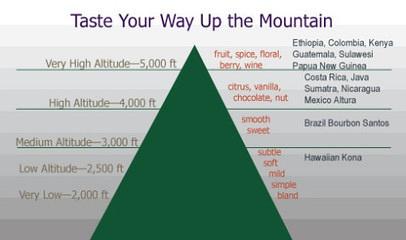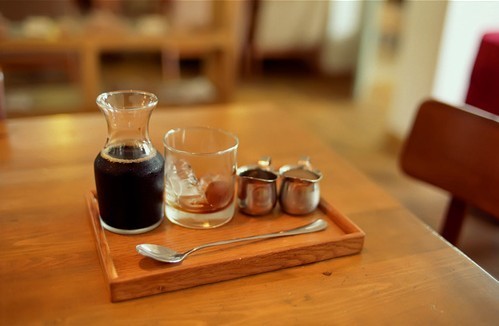Effect of altitude on Coffee Flavor

The influence of geographical location on the flavor of coffee beans is profound. All coffee grows in the tropics, and the altitude at which it grows has a profound effect on the taste of coffee. The tropical belt extends from 30 degrees north latitude to the equatorial regions of the southern mountains that produce the world's truly high-quality Arabica coffee. Central and South America, South Asia and some Pacific islands, and south-central Africa are also the most important coffee-growing areas in the world.
3000-6000 feet above sea level provide ideal conditions for coffee to grow: an average frost-free climate of 60-70 degrees Fahrenheit throughout the year, about 80 inches of moderate rainfall, and plenty of sunshine. Coffee beans grow slowly in cold mountain areas, but the slow ripening process makes coffee beans have higher sugar content, more interesting flavor and mellow flavor. High displacement at high altitudes produces more concentrated fruit flavors, and the best Arabica coffee growing areas have very fertile soil, often in volcanic areas.
Coffee beans grown at high elevations are hard, dense and have the potential to give full play to their special flavor. The really amazing coffee growing areas are between 4000 and 6000 feet above sea level, and these beans are picked carefully only during the mature season. Coffee in Central America is rated according to the altitude at which it grows. For example, SHB (Strictly Hard Bean) is the term for Guatemalan coffee beans, indicating that coffee grows above 4500 feet. Mexico is called Altura, which means "high" in Spanish, indicating that it is high-altitude coffee; Papua New Guinea appends the name "Mile High" to mark coffee beans grown in the highlands and mountains.
Generally speaking, with the increase of altitude, the aroma of coffee becomes more and more prominent and unique (see figure). From the temperature and sweetness of Brazilian beans at 3500 feet to the soaring taste of Ethiopian coffee beans above 6000 feet, altitude will give coffee beans a more complex and subtle taste.
Original English provenance: http://www.scribblerscoffee.com/flavor_effect_of_altitude
Important Notice :
前街咖啡 FrontStreet Coffee has moved to new addredd:
FrontStreet Coffee Address: 315,Donghua East Road,GuangZhou
Tel:020 38364473
- Prev

Coffee knowledge, Espresso oil status on the impact of flower pull
To make a perfect cup of coffee, you need delicate and highly blended milk foam! In addition, will the state of Espresso oil also affect coffee flowers? If so, what impact would that have? We did the following coffee experiments: as shown in the figure below, there are three groups of Espresso: No. 1 Espresso is placed more than two minutes after normal production, fat
- Next

Eight principles for testing a good cup of coffee
The first principle: [clean], clean when light, and clean when strong. It's like a room, it's easy to be clean when it's empty, but it has to be clean when it's full. The second principle: [spindle flavor], that is, it represents the characteristics of this producing area. Cleanliness is the foundation, and an unclean cup of coffee represents a flaw, but clean coffee can easily become tasteless.
Related
- What is the meaning of lactic acid fermentation with coffee bean treatment?
- How to judge the state of foam by sound?
- How does the latte pull out the unicorn pattern? Come to get for a little trick to improve the flower pull!
- Will flower pulling affect the taste of the latte?
- Do you know the history of coffee?
- The difference between honey treatment and sun washing what is raisin honey treatment?
- What kind of milk can a novice use to make coffee foam to keep the foam longer? The correct method and skills of milking tutorial sharing
- Why do washed coffee beans taste sour? Flavor characteristics of washed Coffee
- Introduction to the skill of how to practice the size and height of water injection around the circle of hand-brewed coffee
- How do beginners practice coffee flower drawing from scratch?

